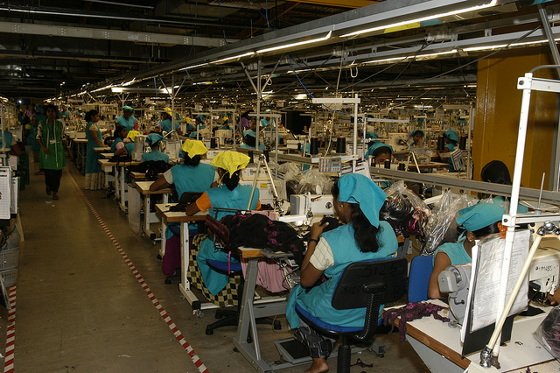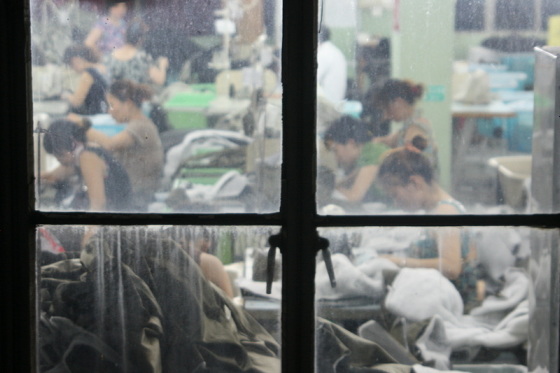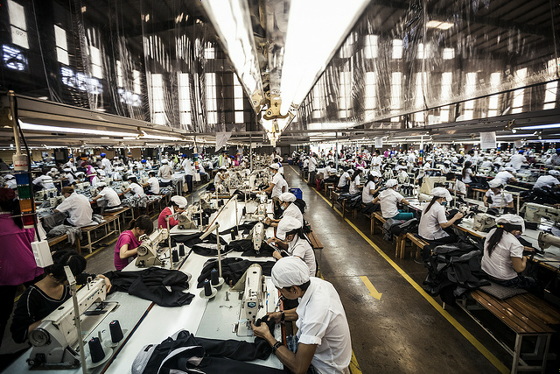It is effective to improve productivity and profit in lowering the temperature inside the factory to optimum temperature

By Asian Development Bank
There is something called "temperature that is easy to operate" for humans so that work does not progress in the hot summer days. When renewing the lighting equipment of a garment factory where many workers work to suppress heat generation and lowering the temperature of the entire plant by about 2 degrees, productivity is improved, profitability of the entire plant is improved, equipment It is reported that the cost of investment was able to be collected in about half a year.
Does Temperature Affect Worker Productivity In India's Clothing Factories?: Goats and Soda: NPR
https://www.npr.org/sections/goatsandsoda/2018/07/23/629871725/why-a-drop-of-4-degrees-made-a-big-difference-for-a-garment-makers- bottom-line
This example was confirmed at a garment factory in Bangalore, India. Companies named "Shahi Exports" have garment factories in more than 50 places in Japan, and about 100,000 employees produce brand clothing such as GAP, UNIQLO, ZARA, H & M.
Not only Shahi Exports' factory but one of the drawbacks of a factory in India is that there is no air-conditioning equipment. Although the spread of air conditioners is progressing gradually in India where the economy is developing, it is nearly impossible for clothing factories operating at a low profit margin to introduce air conditioning equipment at a large cost It can be said that it is a situation. As a result, employees are forced to work while sweating in a workplace where it gets very hot in the summer.

By ILO in Asia and the Pacific
Amid growing interest in environmental issues, Shahi Exports has been asked by client companies to "turn on lights in the workplace from fluorescent lights that currently use lighting to LED lighting that consumes less electricity". LED lighting is said to be able to reduce power consumption by a factor of seventh compared to fluorescent lights, but Ann Dear Nashadam of the economist who heard this is flashing. "If the power is one-seventh, the amount of heat generation may be one-seventh, which is not surprising, it may be possible to lower the temperature of the workplace," Mr. Nashadam actually told the factory I decided to introduce lighting and investigate the correlation between the change in the temperature of the workplace and the productivity of the factory.
Over the course of a few years, Mr. Nashadam gathered data on the quantity and temperature of the products produced at 26 factories in collaboration with researchers such as the University of Michigan and the Massachusetts Institute of Technology (MIT) Sloan School of Management. Mr. Annant Ahuja, one of the managers at Shahi Exports, initially thought that "Mr. Nashadam is spending wasted time", but by the time the result comes out, we rethink that "This is a wonderful result" It seems that it began.
At the factory when we were using fluorescent lights, the time of day when the temperature exceeded 30 degrees Celsius reached one quarter. Mr. Ce 30 degrees is a temperature corresponding to "heat stress threshold" that human beings feel stress from the heat, and beyond this temperature, the human body will become difficult to dissipate heat, Will decrease. Ms. Mandura, a woman working at a factory, said, "It will be hard to keep concentration as it gets hot.To use a powerful sewing machine, you need to be careful not to get your hands caught It will be difficult if it gets hot. " As the workplace gets hot, sweat starts to spew on your face, and fatigue accumulates, so you need to take more time off. Then, factory productivity naturally decreases.

By Matt
When I switched the lighting to the LED, Mandurah said that the temperature of the workshop actually decreased. According to Mr. Nashadam, we say that the daily production volume has been increased compared to the previous year due to the improved working environment.
When collecting data at a factory where Mandurah works, it turned out that the temperature dropped by 2 degrees just by turning the light into LED. As a result, factory productivity gains, profit margin up. Moreover, according to the profit, it seems that the cost of introducing LED was canceled by 8 months. Mr. Lema Hannah, an economist at Harvard University, said that he was "really impressed with this research" and that he has great significance.
Hanna thinks that this research will be one of the hints to solve the problem of slow growth of poor countries. The wages given to workers are strongly linked to productivity, and workers in poor countries tend to have lower productivity on average than in developed countries. The main causes are educational level and health problems, but at the same time there is also a tendency that "poor countries are hotter than others". Mr. Hannah shows the view that "the reason why the northern hemisphere's economy grows faster than the Southern Hemisphere" is at a high temperature.
Also, Mr. Hannah points out that it is a thing to cast a stone on the idea that there is a conflicting relationship (trade-off relationship) between coping with climate change and economic growth. Mr. Hannah said, "As coping with climate change progresses and temperature drops, workers productivity gains and economic growth is a positive factor It will lead to leaving results. "

Related Posts:
in Note, Posted by darkhorse_log







